| Home>etc>article |
My camera history
The following text is a slightly modified machine translation and may have some unnatural parts.
A long time ago, I read in a column of the Nikkei newspaper, and there is a story about a boy who is a regular customer of a certain camera mass retailer from the perspective of a clerk.
Perhaps it was a wealthy family, the boy changed over expensive SLR cameras one after another. It wasn't stated whether he was trading in, but it would have been. So, in the end, the boy arrived at a model that could shoot manually.
Looking back on myself, at that time I was struggling to load the film on the camera. It was Inuyama Castle, when I rewound the film I took, I made a mistake in the procedure and rushed to ruin everything.
The first film camera I experienced was an Olympus compact camera, a rangefinder model equipped with a 38mm single focus lens. It's 35mm, but I don't remember it being bokeh. I remember that 38mm was a little narrow for taking pictures of buildings and landscapes. By the way, I later bought a 40mm conversion single focus lens.
By the way, when I was a student, I suddenly thought when I was shooting Azuchi Castle, and I realized that I was only looking at the scenery through the viewfinder. After that, I didn't take many pictures.
The next thing I bought was Fujifilm's Camedia. The focal length was a two-stage type. When I looked it up later, it was a dark lens. It was helpful because the film loading was done automatically.
The first digital camera I bought was the Epson CP-500. I think it was around 2000. I chose it because I liked the design because the compact flash can be used and the specifications are moderate at that time with 800,000 pixels, but when Live View is turned on, the dry batteries (4 AA batteries) are consumed quickly. Also, at that time, I didn't go out so much, so I ended up selling it without using it much.
The next one I bought was the Canon IXY DIGITAL 200a. This is a 2 megapixel model. I bought it for shooting materials for the homepage creation course I was attending at that time. It was October 2002, but I remember that there were already models with 3-4 million pixels at that time. I don't know the difference, so I chose the 2 megapixel model, which is reasonably priced.
I started using this little by little when I went home. When I printed on A4 paper with 2 million pixels, I sometimes remembered that it wasn't enough, but I continued to use it with stable performance like Canon IXY. If the conditions are good, a pretty beautiful image will be output, and most of the photos on this site are taken with the IXY 200a.

Ukinuno Pond taken by IXY200a
Around November 2003, Nifty started a blog service (Cocolog), and I also started blogging, but at the beginning it was a principle of not uploading photos to the blog. It changed after I wrote an article about Otogo Sahime. I uploaded the article with the scenery of the Sanin region, and when I checked the access analysis, the number of visits started to increase. That's why the concept of the blog was set to introduce the legend of the Iwami region of Shimane prefecture. So, when I returned home, I was increasingly taking pictures of the scenery of the Iwami region of Shimane prefecture.
It was such an IXY 200a, but I dropped it on the Shinkansen in the summer of 2009. I used to attach the camera case to my waist belt, but it was loose with Velcro. I noticed it at Shin-Osaka station and checked if it had arrived due to lost items, but in the end it didn't come back.
So the next choice was the Panasonic ZX1 instead of the Canon. This was simply because it was compatible with SDHC cards. Also, the wide-angle lens of 25 mm was attractive. IXY was 35mm in conversion, so I wanted a device that could take a wider picture. The ZX1 was a model with 12 megapixels and 8x zoom. The image quality is not bad, and some of them are taken with ZX1 on this site.
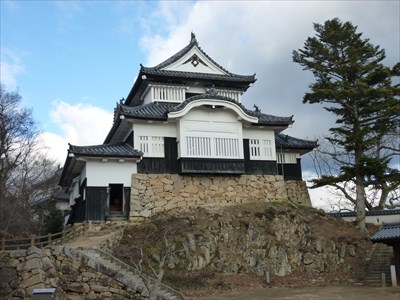
Bichu Matsuyama Castle taken by ZX1
Certainly the Panasonic TZ7 was also selling well at that time and was a candidate, but I chose the ZX1 with a compact body. The TZ7 was also a popular model, so I don't know which one was the correct answer.
As I think now, 2009 was already a year after Panasonic announced and released the first mirrorless interchangeable-lens camera G1 in 2008, the previous year. The epoch-making G1 at that time was introduced on TV and became a hot topic. However, I didn't try to pick it up because the advertisement "Women's style mirrorless camera " was imprinted with the image of women. Actually, it was a well-balanced model with maniac functions.
From that time on, I had a desire for a good camera. I've long wanted a model that can shoot manually. As mentioned above, there used to be a wealthy camera kid who bought new cameras one after another, but there is a legend that he finally arrived at a camera that can shoot manually. However, I didn't feel like asking a question on the bulletin board on the Internet. I couldn't figure out how to ask a question in my mind. For now, I should have chosen a model with P, A, S, M and mode dials, but I bought the ZX1 without knowing it. The ZX1's mode dial only switches between scene mode and iA mode, and does not support manual exposure.
If I was asking questions online, I might have been recommended around Canon's Powershot series. Also, I might have bought a mirrorless camera, which was growing in popularity at that time.
In 2011, the ZX1 was used by the family, and it became necessary to purchase another one. Again, I didn't look it up and chose the Panasonic FH5 easily at the store. It was a slim body with a wide angle of 28 mm and a high pixel count of 16 million pixels, but I didn't notice any distortion in the image (I think it was corrected inside the camera). This was a model in which the image quality was neither good nor bad. The high pixel count of 16 million pixels was too large to handle in Photoshop, which I was using at the time, so I decided to reduce it to a medium size and record it. Many images taken with this camera are also used on this site.
The policy changed in 2012, and I felt like buying a full-fledged digital camera from around the previous year of this year. So what I did was read the reviews on Kakaku.com. At first, I wasn't sure what was written.
So, I aimed at Panasonic's high-magnification zoom model FZ30 or FZ50. This was a popular model with a 1 / 1.7 type sensor. At that time, it was difficult to use a single-lens reflex camera suddenly, so I had the idea of buying a high-magnification zoom model (bridge camera) that looked like that and using it as a trainer.
I thought about getting a used one at an online auction, but by chance I got to know the website of Tama-Plaza's Champ Camera, and because FZ50 was in the list, I decided to go there.
However, at the same time, the Panasonic FZ100 was also selling used products in mint-condition, so I was curious about this. When I read the reviews on the internet, it was a model with a bad reputation for image quality, but I was fascinated by the functionality of 24x zoom and high-definition video recording.
So, I bought the FZ100 after all, but I was surprised that the image quality was actually poor. It is a so-called oil painting quality. It can be dealt with by weakening the noise reduction in the settings, but at that time I didn't know that. At that time, the sensor was switching from CCD to CMOS, and the image quality of the digital camera was not good. While the FZ100 has 14 million pixels, the successor model FZ150 has reduced it to 12 million pixels, which shows the harmful effects of increasing the number of pixels.
I remembered the manual exposure with this FZ100. The rear dial is a jog dial, and by pushing the dial, you can switch between aperture / shutter speed / exposure according to the mode. It was easy to see that the histogram turned orange when the exposure was appropriate. In addition, the highlights that were overexposed during the auto-review after shooting flashed, so I was more aware of changes in the aperture. After all, I soon got tired of manual exposure, but I think I got a general feeling at this time.
I had a problem shooting the scenery of Shimane prefecture. There are many cloudy days in the San'in region. In winter it is often dim even during the day. I often used Photoshop to level-correct the photos I took. The next desire arose for a model that could shoot brightly in the dark.
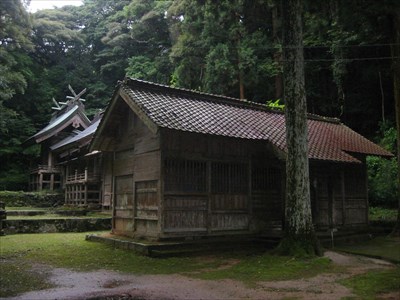
Tabato Shrine taken by IXY200a
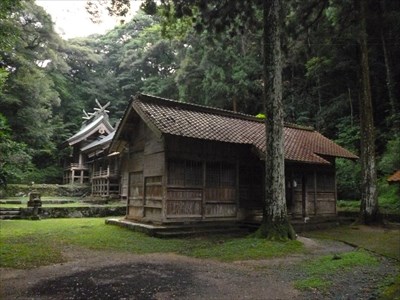
Tabato Shrine taken by FH5
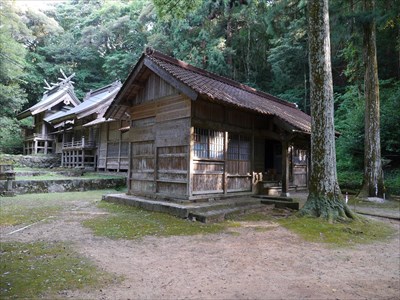
Tabato Shrine taken by G3 + 12-35mm F2.8
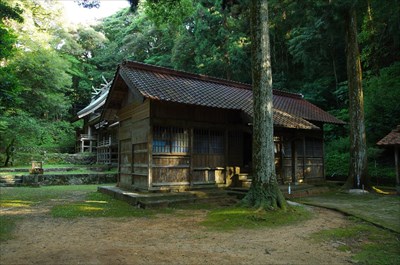
Tabato Shrine taken by K-01 + Tamron 17-50mm F2.8
In order to take beautiful pictures even in dark scenes, you should choose a model with a bright lens, specifically a model equipped with a lens with a small open F value, so it is called a high-end digital camera from a high-magnification zoom machine. Moved to the genre equipped with 1 / 1.7 type sensor. It is a group of models that cost a lot of lenses and can be taken well.
At first, I was considering the Panasonic LX5, but I happened to buy the Ricoh GRD3 exhibit because it was sold at a low price. I was attracted to the phrase of sharp depiction of a single focus lens. Actually the image was good. In addition, I bought a used LX3 later.
The Ricoh GRD3 was easy to customize with the settings. With reference to GRD's mook book, I repeatedly took pictures with the same composition by finely changing the contrast, sharpness, saturation, and white balance settings. I think I remembered the camera settings related to GRD3. However, this was just a matter of remembering RAW development.
Actually, GRD3 was a model that can take good pictures in the dark, but at that time I stopped going home for some reason and did not play an active part in Shimane.
Also in the winter of 2012, I bought a second-hand model of Panasonic's mirrorless single-lens GF2 double lens kit for a model with a larger sensor. Actually, a new successor GF3 was sold cheaply, but I avoided the GF3 because the built-in microphone is monaural. The GF2 was a stereo microphone. This is a rare case where the function has deteriorated due to a model change. When I bought the GF2, I noticed that it was a model that did not have a mode dial and had an operation system centered on a touch panel.
When buying a mirrorless camera, I thought about which would be better, Sony's NEX. It was easy to imagine that the NEX equipped with the APS-C sensor would have better image quality than the Four Thirds sensor. But in the end, I chose Micro Four Thirds because of its operability. This is because I was accustomed to Panasonic's operation system with the FZ100.
NEX had an aspect that operability was complicated. Specifically, I tried to check the operability by setting it to manual mode, but at that time I didn't know the operation of pressing the exposure button to switch the aperture / shutter speed. It's nothing to understand, but at that time it seemed difficult.
I chose the GF2 in that way, but it was a dark image with large limb darkening, probably because it was incompatible with the included single focus lens 14mm F2.5. I wasn't satisfied with that, and when I bought the Panasonic G3 as well, the limb darkening was also corrected well and the result was satisfactory.
Also, when I looked at the Champ Camera website, I found a used product in mint condition of the Panasonic GX1 + 14-42mm PZ lens kit, and I bought it even though I was attracted to its coolness and didn't need it. The contents of the GX1 are almost the same as those of the G3, which is also a satisfying image.
I bought some interchangeable lenses, and the killer lens is probably Panasonic 20mm F1.7. The lens was designed for snapshots, which is 40mm in the 35mm format, which is a little wider than the standard range, and the image quality was good. I still use it.
I think now, I should have prepared the interchangeable lenses of Micro Four Thirds here, but I do not know what angle of view is suitable for me, so I have a high-end point-and-shoot camera, Canon Powershot G11, Ricoh GXR + P10 kit (later S10 purchased), Nikon P7100, etc. have been prepared. These had good image quality and were good enough for uploading to blogs and homepages.
I bought a mirrorless camera in 2013, and this leaves me with a single-lens reflex camera as my final goal. I thought about it here, but judging from the share of SLR cameras, if you buy a Canon or Nikon, there is no doubt about it later. However, both companies had a rich lineup, and as a beginner, I had no idea which one to choose. So I thought about it, but one day a Pentax K-x lens kit (good) was posted on the Champ Camera website. The price is in the 20,000 yen range, and I bought it with the reason that I would like to use it for practicing SLR cameras. I also bought Tamron's 17-50mm F2.8 and 28-300mm. Now I have a simple system.
However, this was a failure. The pictures I took aren't very clear. The focus accuracy is poor.
As a countermeasure, I ended up buying the same Pentax mirrorless camera K-01 later. The K-01 is a model that drives a single-lens reflex lens designed and optimized for phase-difference AF with contrast AF. Since the operation is the same as Live View, the AF speed is slow, but the focus accuracy is accurate, and I was finally able to bring out the potential of the Pentax machine.
For the above reasons, I came to think that the mirrorless camera is more accurate than the single-lens reflex camera because it focuses on the sensor image plane, and the result is satisfactory.
That's why I brought back the Panasonic G3 and Pentax K-x to my parent's house in the summer of 2013, but that year I noticed that the whole volume of the world's masterpiece literature series for boys and girls published by Shogakukan was left, and I made the material. I didn't go out much.
I left the G3 and K-x at my parents' house (I used it as a model for homecoming because it is a baggage to bring home every time), but there is no single-lens reflex camera in Yokohama. So I started thinking vaguely that I would need another one, but at that time, the Olympus Micro Four Thirds E-M1 was announced. Olympus had developed a single-lens reflex system based on the Four Thirds standard, but the E-M1 was a model with the intention of withdrawing from the single-lens reflex camera and integrating it into a mirrorless single-lens camera. Specifically, it is equipped with image plane phase difference AF and moves the Four Thirds lens via the mount adapter without stress.
While I bought and read the E-M1 mook book, I was wondering, "Why did Olympus withdraw from SLR cameras?" Around that time, a lens kit (used product in mint-condition) for the SLR E-520 was available on the Kitamura website, so I decided to buy it.
When I actually used it, I got the impression that the sensor is smaller than APS-C, but it's not bad. In terms of business, it is better to focus on the selling PEN and OM-D, but I wanted to keep about one single-lens reflex line.
I couldn't go home in the summer of 2014 and 2015, and it wasn't until the summer of 2016 that the G3 and K-01 came into play. Since K-x is worried about the image, I visited the scenery of Shimane prefecture again (although I have already visited it once) and took a picture with a mirrorless interchangeable-lens camera.
At that time, I went out with a newly purchased interchangeable lens 12-35mm F2.8 attached to the G3. I attached Tamron 17-50mm F2.8 to K-01. Both F2.8 through zooms gave good results. The K-01 was so vivid that I thought it was in vivid mode even in landscape mode. In terms of image quality, the APS-C, which is one size larger than the Four Thirds, has an advantage over the Four Thirds, but there was no extreme difference.
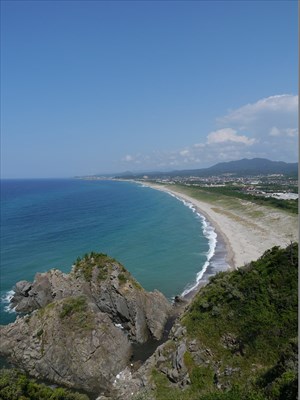
Iwamigata-sea taken by G3 + 12-35mm F2.8
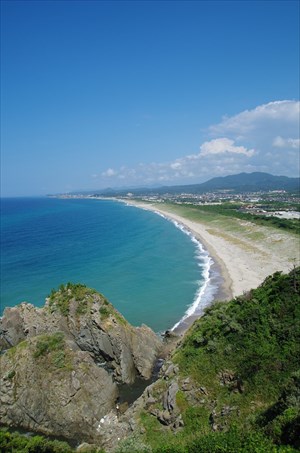
Iwamigata-sea taken by K-01 + Tamron 17-50mm F2.8
I went back to Yokohama and bought a Panasonic 35-100mm F2.8 this time. It is a lens equivalent to 70-200mm F2.8 in the 35mm format, but it is as light as 360g. I wondered if I could shoot Kagura at night when I returned home.
I also buy a lot of other things. When I returned home in the summer of 2016, I added the Canon Powershot G16. This is a high-end point-and-shoot camera with a bright lens, and is positioned as a sub-machine of the G3 and K-01.

Kiha120 taken by Powershot G16
As a variant, I also have a Fujifilm FinePix Real 3D W3. It is a 3D model. I also bought the Casio EX-H20G as a model with built-in GPS. For bridge cameras, I also bought Sony HX1 and Fujifilm FinePix_S8000fd. Fuji had a good color of Fujichrome.
I also bought used models such as the Panasonic TZ1 and FZ10. These models were models before the high pixel count of point-and-shoots, and were helpful for image quality. However, since it is an old model, contrast AF is slow and it has not been used regularly.
I also bought a silver halide film machine, Nikon FM10. It's a model that allows you to enjoy manual exposure and manual focus, but I don't really understand how to read the split viewfinder, and I rarely use it because I can't take a lot of pictures with film. I left it at my parent's house.
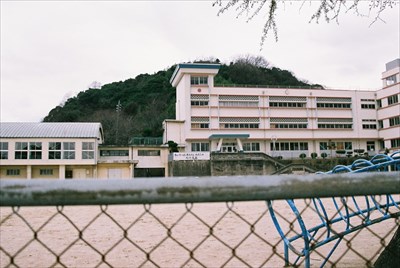
Iwami elementaly school taken by FM10
Since it took longer to write data to the GX1, I purchased the Panasonic GX7mk2 as a replacement in September 2018. It is a double lens kit of 12-32 mm and 25 mm F1.7. I don't use 25mm because it feels narrow, but 25mm (50mm conversion) itself was an angle of view that I wanted to experience.
The GX7mk2 was used in combination with the 35-100mm F2.8 for shooting Kanto Sato Kagura. Even at the telephoto end, it is bright at F2.8, so it goes up to ISO3200 at night Kagura, but it is shown properly. It's light so you won't get tired even if you carry it all day.
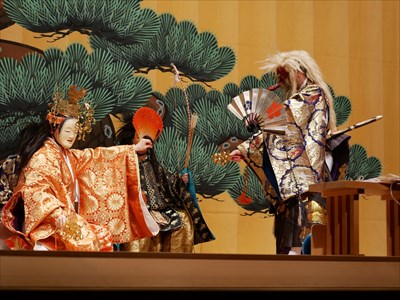
Kagura Tenson-Korin taken by GX7mk2 + 35-100mm F2.8

Kagura Ibuki-Yama taken by GX7mk2 + 35-100mm F2.8
Also, since the Olympus E-520 broke down, I was thinking of an alternative single-lens reflex camera. I wanted to experience the pentaprism model once, and from my experience with K-x, I came to the conclusion that the sensor dust removal device must be an ultrasonic type. It was KP that met the conditions for Pentax. So, I bought KP and Sigma 18-200mm in June 2020, but the current situation is that there is no turn due to the corona virus. I only take pictures of the scenery around my house.
I bought the Sigma dp1 Quattro around the same time as KP. This is because I want to experience a three-layer sensor. When I actually bought it, I had the impression that it was high resolution, but not much different from the Bayer machine. There are many drawbacks when the high sensitivity is weak, the data writing is slow, the battery drains quickly, and the AF is slow, but other than that, it was a habit-free operability. Although it is vulnerable to backlight, there is no particular problem when shooting landscapes in front of the day. The dp1 Quattro also doesn't have much of a turn because of the corona. Even so, when I returned home, I was able to photograph the scenery of Hamada City, Shimane Prefecture. Since it is a single focus with a conversion of 28 mm, I can not zoom in case of emergency, but since 80 to 90% of the photos are taken with a conversion of 28 mm, I do not feel so inconvenient.
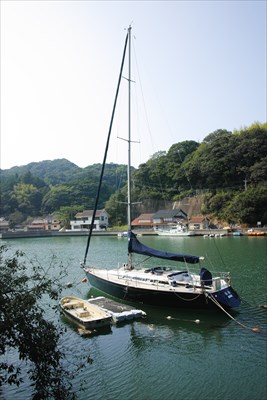
Yacht and Tonoura-Bay taken by dp1 Quattro
I was on the way to buy the Sigma sd Quattro, but it was surprisingly heavy, and since the L-mount Sigma machine was announced, I decided that I should not increase the number of mounts that have no future. Another factor is that the dp1 Quattro was lightweight.
Both the Pentax KP and the Sigma dp1 Quattro are APS-C sensors, and I am gradually increasing the size of the sensors.
However, the aspect ratio of 4: 3 is better for uploading to the website. For example, the thumbnail size can be 400 * 300. I plan to use Four Thirds for the website.
For the full frame, it will be after using the Pentax KP and the Sigma dp1 Quattro. KP is planning to make more shots by shooting Kagura, but dp1 can only be used for landscape shooting, so for me it would be good if I could shoot 10,000 shots. Actually, I also want a 1-inch sensor machine.
I bought a Panasonic TX1 in 2021. It is a 1-inch sensor machine with a 10x optical zoom. Probably because the 10x zoom is packed in a compact housing, unlike Micro Four Thirds, it does not resolve to the periphery. I realized that I was surprisingly focused on image quality.
As mentioned above, I have spelled out the strays so far, but I am keenly aware that I should have consulted online as soon as possible. If I asked about the model that can be taken manually and brightly in the dark, they would have introduced the Canon Powershot series and so on. I didn't have to make a detour.
Also, I wish I had attended a photography class. I used to go to the computer class, but I couldn't think of it in the photography class.
As a hindsight, I think I should have purchased a mirrorless camera in 2009 and had an interchangeable lens ready as soon as possible. Mirrorless cameras can constantly take good pictures for landscapes. The time to take materials for websites and blogs and the time to use good digital cameras have shifted.
I can't help it, so I'm uploading the guardian dogs from the shrine as a material. I have traveled around the Iwami region quite a bit, so I have a sufficient number of photos.
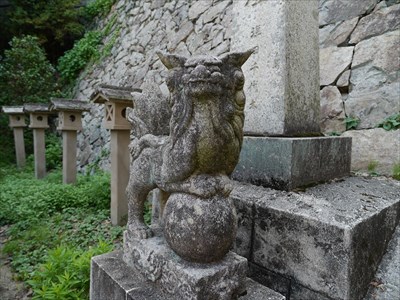
Komainu of Yamabe Shrine taken by G3 + 12-35mm F2.8
I made a detour, but it's a relief that I was able to feel like I was traveling back in time by buying and using a used model from around 2007 (which I could only go back to).